This is the sort of thing that keeps me awake at night. A big NFL assignment, uncertain access and questions about what gear would work best. Welcome to my sleepless nights.
I’ve photographed the National Football League since 1980, the first twenty years with the Bills for my paper in upstate New York, the last twenty with the Chiefs for wire services here in Kansas City (mostly the Associated Press). With fewer credentials due to COVID 19, I figured I’d be watching from home this season. That changed with a phone call.
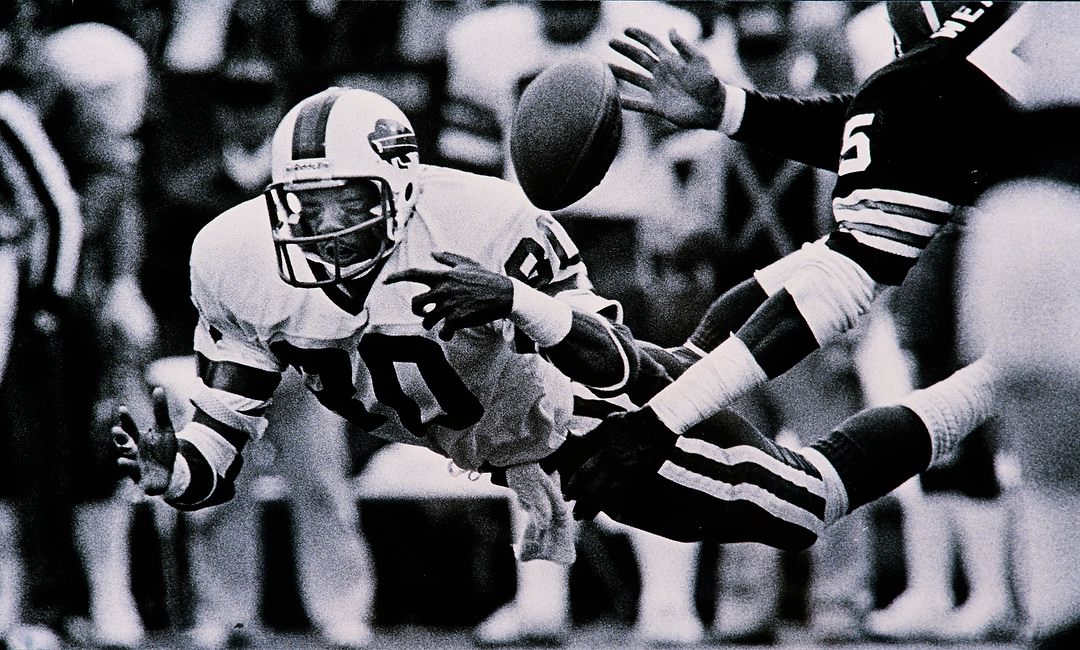
This photo of Jerry Butler diving for a pass at Rich Stadium in the early 80s won me an Honorable Mention in the Pro Football Hall of Fame contest that year. I’m most proud that I could manually focus on sports back then!
The Associated Press has a contract with the NFL to provide images, which means at every NFL game the AP has some photographers (usually staffers) covering game action, some freelancers shooting on spec (speculation, paid only if images sell, usually to corporate buyers) and a photographer shooting for AP Images (covering special requests from the NFL). The week before the Chiefs’ first game, I got a call from AP Images asking if I was available for the season. Due to COVID and the cancellation of my travel, I actually was this year. Which began my sleepless nights.
As I mentioned, the AP Images work isn’t game coverage but assignment work. In other words, my job that day is less to follow the ball and more to try to get good, “isolated” photos of individual players. Which means I need to shoot tighter and focus less on the marquee players and more on everyone else. I’m shooting a lot between plays too, as well as pre-game, again trying to get good photos of as many players as possible, with and without helmets. Plus, there are usually extra assignments for things like special signage, different shoes being worn, players that need social media images, sponsored equipment and so on. That all means I’m making different kinds of photos than regular game coverage, which likely means using different camera gear as well. The question then becomes, “what’s the right gear to do the best job.”
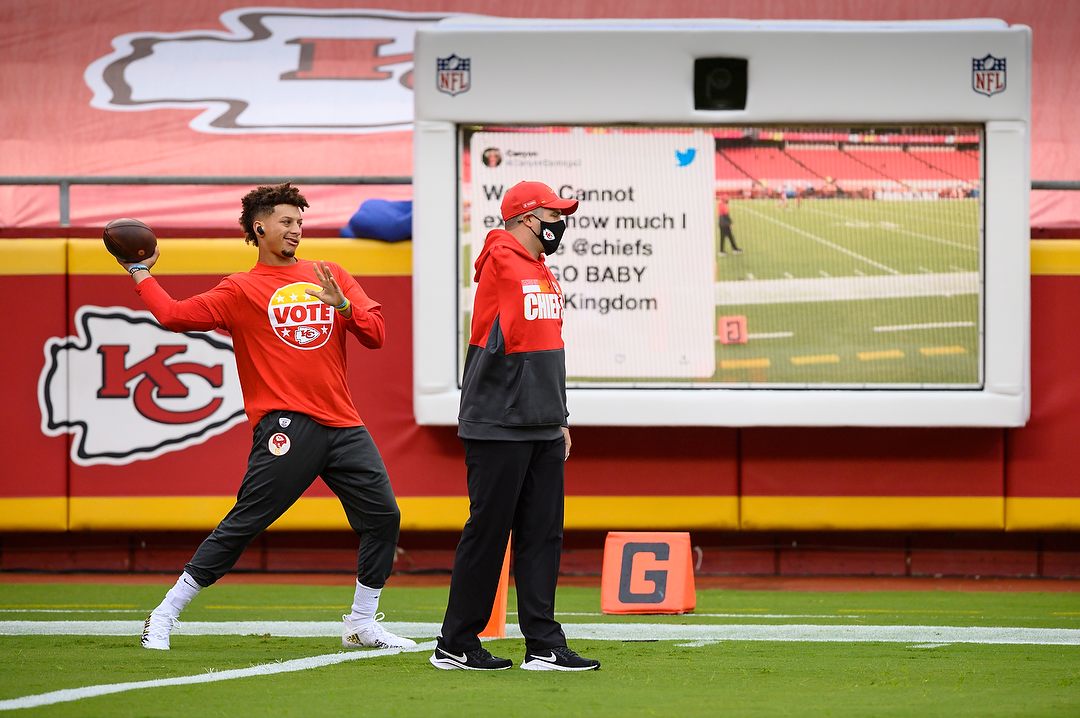
The “Showtime Cam” is now along the sidelines this season, so pairing that with Patrick Mahomes in a “Vote” shirt was practically a perfect photo from pre-game activities. Nikon D780, Manual exposure, ISO 1000, 1/2500 at f/5, Nikkor 500mm f/4 lens.
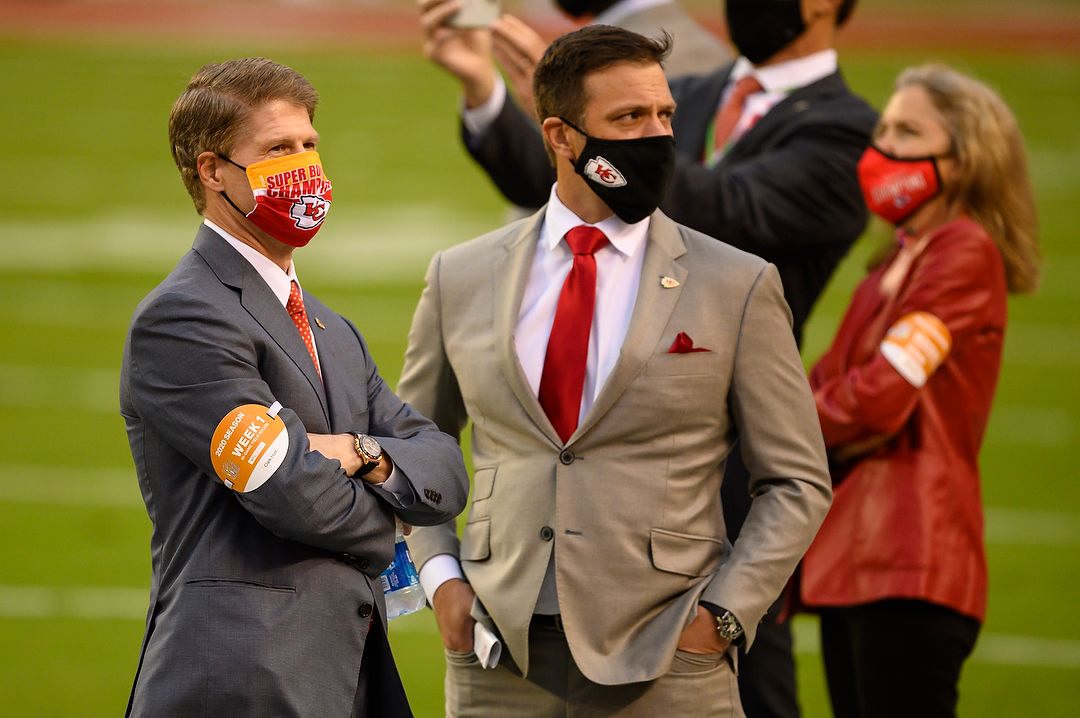
Another non-action, but still very important photo, is this of Clark Hunt, Chairman and CEO of the Chiefs, left, with General Manager Brett Veach. Nikon D780, Manual exposure, ISO 2000, 1/1600 at f/4, Nikkor 500mm f/4 lens.
For normal game coverage I’d use two or three high-end (fast autofocus and fast frame rate) Nikon cameras with the 200-400mm f/4, 70-200 f/2.8 and 24-70mm f/4 Nikon lenses. But this wouldn’t be normal game coverage. In addition to the priority being tight photos, often vertical, with the new photography restrictions I’d be shooting from the stands, not the sidelines. That meant I’d be using my Nikon 500mm f/4 lens, big, but sharp, sharp, sharp. But then would my second lens be the 200-400mm f/4, or the 70-200mm f/2.8? With the new situation I’d just have to take them both to find out. And would I need a wider lens? Possibly, so add in a 24-70mm f/4. Lots wider? Better bring the 14-30mm just in case. Ugh, that’s a lot of gear. Oh, and I guess I’ll need cameras, too. But which ones?
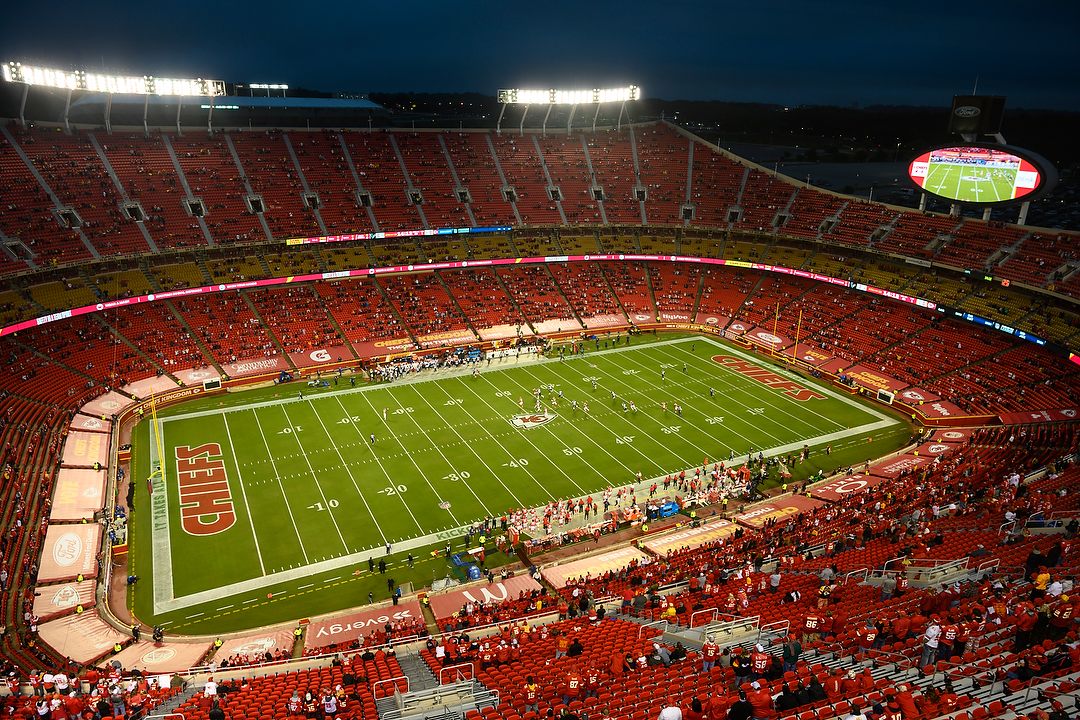
The lone advantage to transmitting from the press box is that it’s a good position to make an overall. One of the few opportunities I had to use a wide-angle lens, it’s also an important photo as the Chiefs were one of the few teams to let a limited number of fans attend the game. Nikon Z 7, Aperture Priority, ISO 500, 1/100 at f/5.6, Nikkor 24-70mm f/4 lens.
Over the last year I’ve been transitioning from mirrored camera bodies to mirrorless, and I’ve really been enjoying my Nikon Z 7 and Z 6 cameras. The one drawback I find, though, is with fast action sports. The autofocus, while good, isn’t as fast as the best Nikon mirrored bodies (D5/6, D850, D500). And the “stutter” effect through the viewfinder makes it a bit harder to follow erratic action. No longer having a D5, I bought the new D780 earlier this year. Not designed as a “sports” camera, it does inherit newer autofocus algorithms from the D5, and fires at seven frames per second. Plus, the high ISO performance promised to be pretty impressive. However, I also had my D500 (APS-C, crop sensor), the Z 7 and Z 6, and a friend had offered me his D4. Time to do some testing.
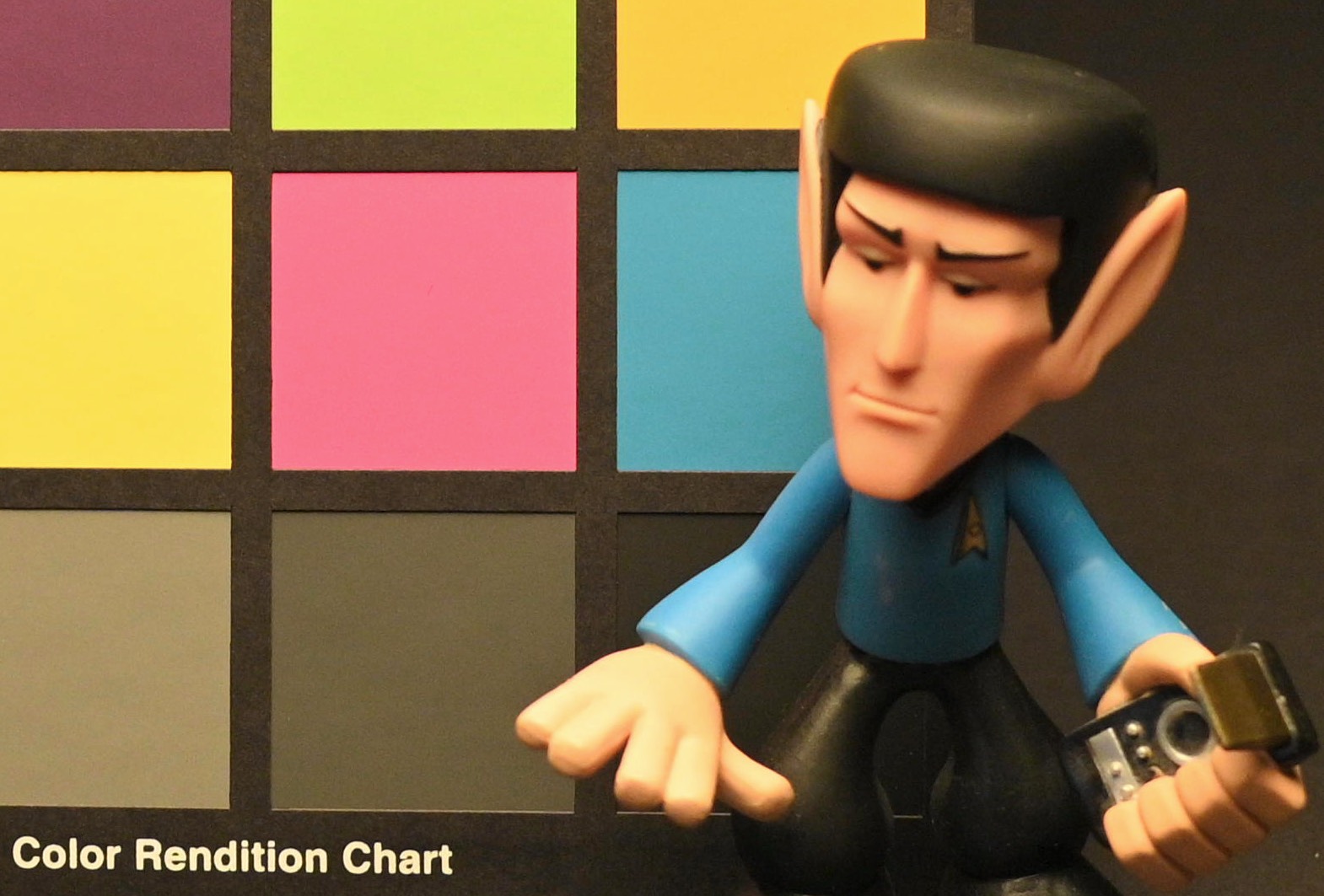
A 100% zoomed view of the 2500 ISO test from the Nikon D780. The noise is barely visible, and since I knew I’d be shooting at mostly 2000 and 2500 ISO, this would be my primary camera.
I’d used all of these cameras enough to be pretty confident of how their autofocus systems would perform. What I wanted to compare, then, was their noise performance at high ISO. The challenge with any serious testing is reducing variables. First, I set up a test scene under fixed lighting. Then I went through each camera’s menus to set their processing the same, plus turn off any in-camera noise reduction. Finally, I’d shoot in RAW (NEF) and match edit settings in Adobe Lightroom. With all of that in place, it was just a matter of shooting the tests, in Manual exposure, from 2000 to 12,800 ISO.
Noise is subjective, meaning you may have a higher or lower tolerance for it than I do. What I was looking for was the highest ISO on each camera that still gave me the quality I wanted in my photos. The results didn’t surprise me very much. I expected the cameras with larger pixels and newer processing (newer cameras) to perform better. I’ve also shot all of these cameras at higher ISOs (than what’s listed below) and been happy with the results, but again, this test was to find the hightest ISO I’d shoot at for this particular assignment. Here’s what I found:
Nikon D780, 24MP full frame, 2020 – 8000 ISO
Nikon Z 6, 24MP full frame, 2018 – 6400 ISO
Nikon D500, 21MP crop sensor, 2016 – 3200 ISO
Nikon D4, 16MP full frame, 2012 – 3200 ISO
Nikon Z 7, 45MP full frame, 2018 – 2500
With that knowledge in hand, this is the kit I planned on using at the game:
Nikon D780 with Nikon 500mm f/4 lens
Nikon Z 6 with Nikon 200-400mm f/4 lens
Nikon Z 7 with Nikon 24-70mm f/4 lens
But, I also brought along the D500 body, 70-200mm f/2.8 and 14-30mm f/4 lenses. That’s because I still didn’t know exactly what I’d encounter as far as access went.
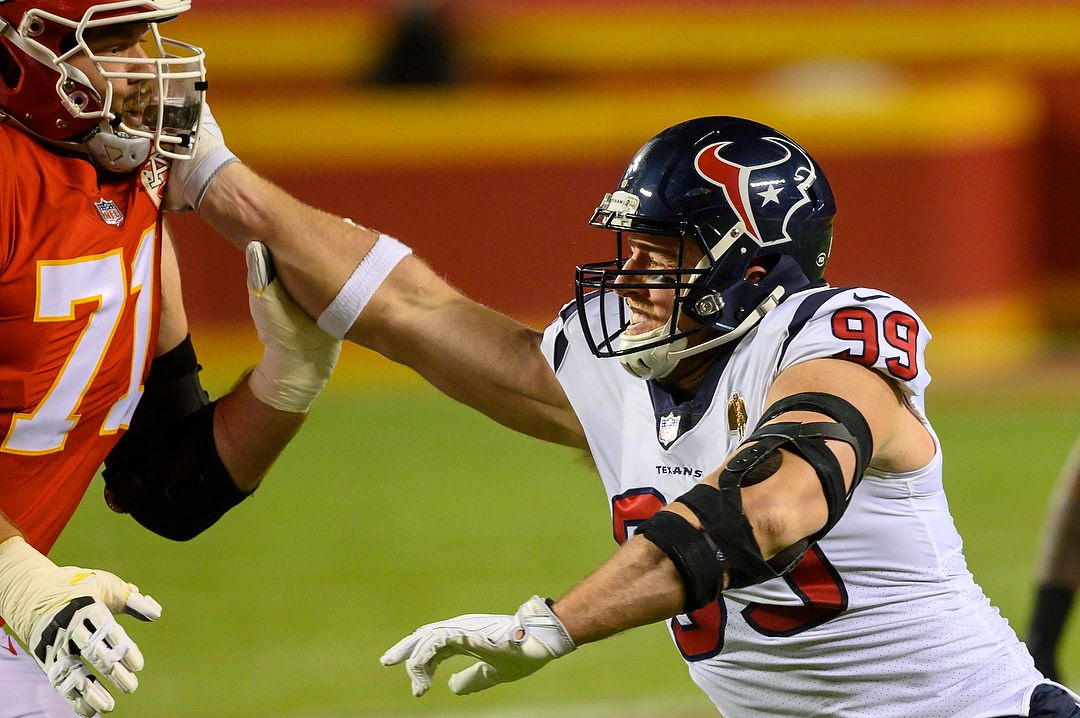
Texans defensive end J.J. Watt rushing against Chiefs offensive tackle Mitchell Schwartz. This is a great example of how smooth and clean the noise is with this camera at a relatively high ISO. Nikon D780, Manual exposure, ISO 2500, 1/1600 at f/4, Nikkor 500mm f/4 lens.
The NFL, like other pro sports leagues, has been very, very serious about trying to protect their players and staff. Part of that plan was to remove most non-essential people from the field, although some team photographers still had access. For the rest of us, we’d be shooting from the first row of the stands, from the 30-yard line down to and behind the end zone, on both sides of the field. No access behind the teams. That meant that if we wanted to switch ends of the field, we’d need to climb up to the first concourse level, cross over and then hike back down. Lots of steps, not quick or easy, and since Kansas City allowed some fans into the game, through fans as well. Here’s how those positions, and changes, affected coverage.
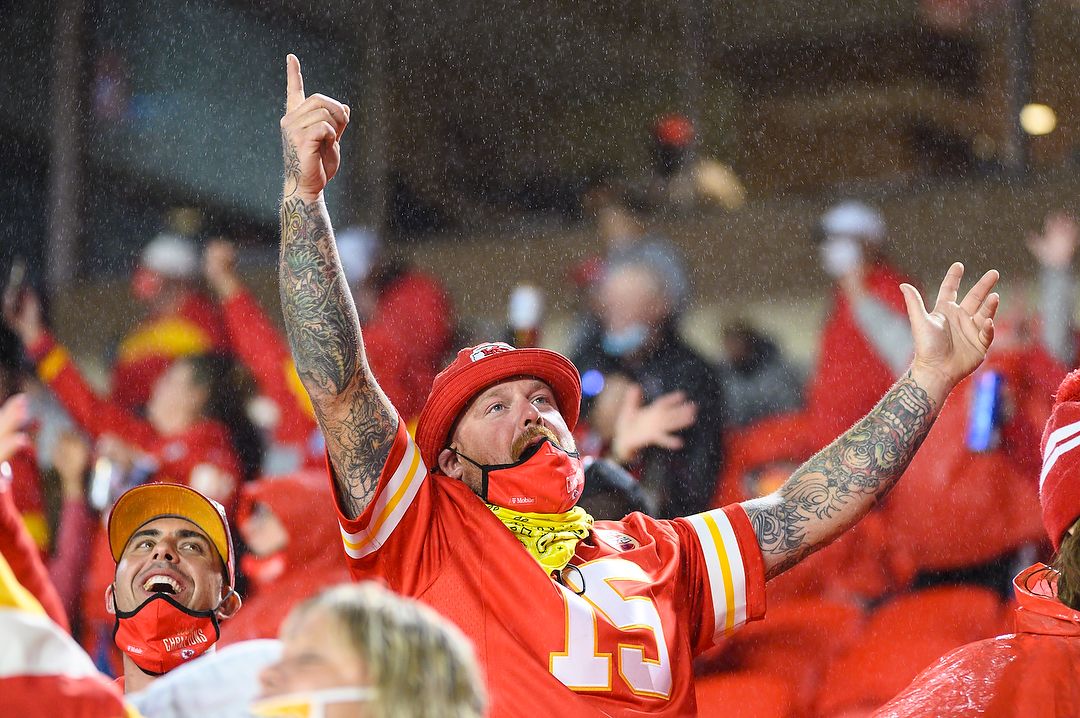
Having fans in the stadium made getting around more difficult, but also gave us photographers another opportunity to make some nice photos. Nikon Z 6, Manual exposure, ISO 2500, 1/320 at f/4, Nikkor 200-400mm f/4 lens.
Working from the first row of the stands meant we were elevated, which was both good and bad. There were less things to block us from shooting the action (ball boys, officials, team members wandering around), but we were further away and shooting down on players (which doesn’t look as good as shooting up, from a kneeling position). Having only the first row to stand or move in also meant traffic jams. There’s only about two feet between the seats and the concrete wall, so getting around other photographers (and some video people with tripods) was a real challenge. Because of that, many photographers chose to shoot mainly from the end zones, but that puts you even further from the action, particularly when teams get to mid-field or beyond. While a 200-400mm or 100-400mm lens is great during normal seasons when you can easily follow along the sidelines, this time they’re a bit short. And, because of the time and effort it would take to switch ends, many photographers were relegated to just shooting when the teams were near them.
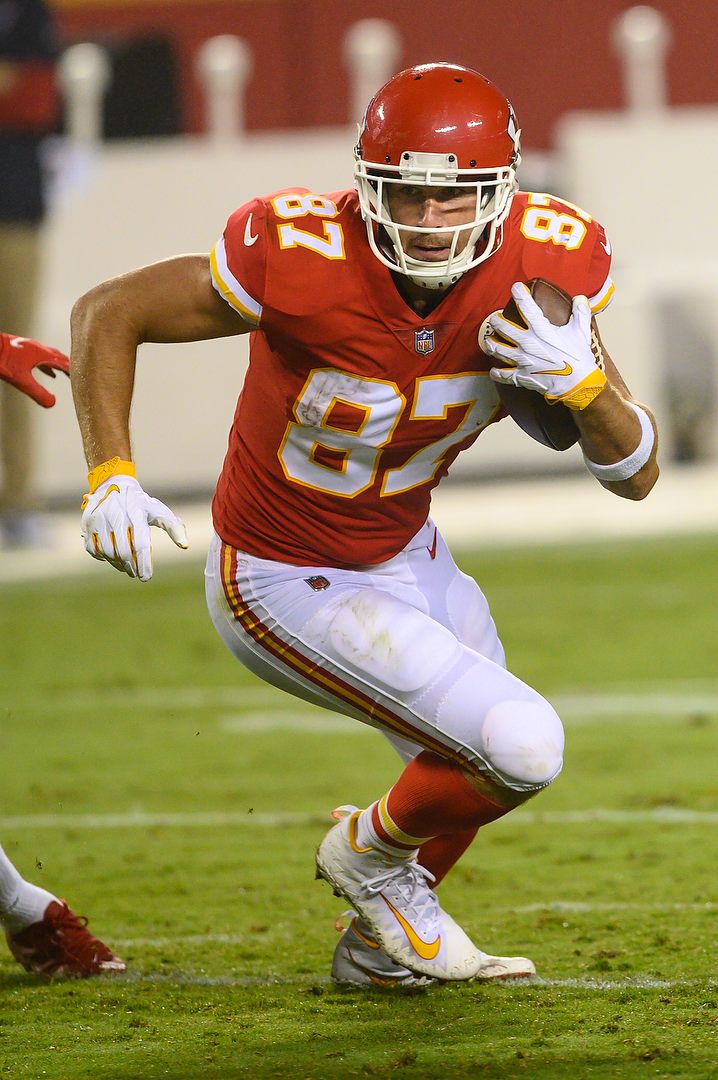
This is exactly the type of photo my editor is looking for, vertical, clean background, no other players in the frame. Chiefs tight end Travis Kelce making a catch and run. With the slightly elevated angle, I have to look for photos where the player’s head is up, so you can see their eyes. Nikon D780, Manual exposure, ISO 2500, 1/1600 at f/4, Nikkor 500mm f/4 lens.
For me, of course, it was all a bit different. I didn’t have to chase the game, because, as one editor told me, “just shoot whoever’s facing you.” The 500mm was great for that, the extra reach really paying off. And the D780 outperformed my expectations, locking in focus quickly and tracking exceptionally well. While not the 10-12 frames-per-second (or even 20!) that some cameras do today, the 7fps were just fine for me.
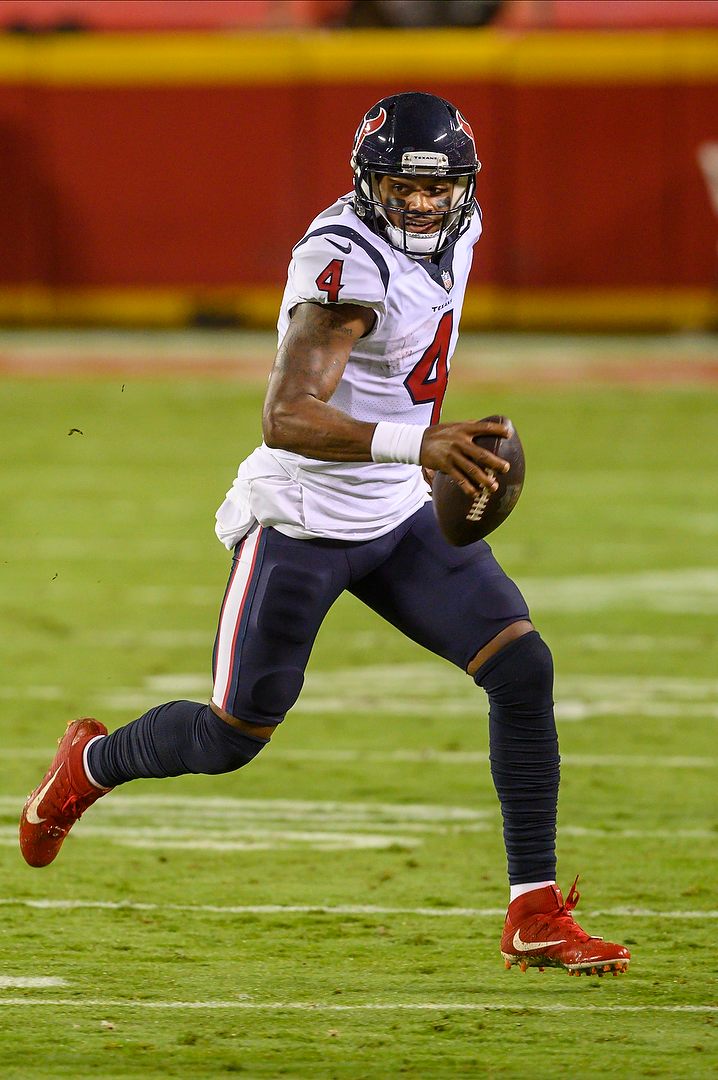
I have a whole series of Texans quarterback Deshaun Watson runing across the field, thanks to the excellent AF performance of the D780. Nikon D780 Manual exposure, ISO 2000, 1/1250 at f/4, Nikkor 500mm f/4 lens.
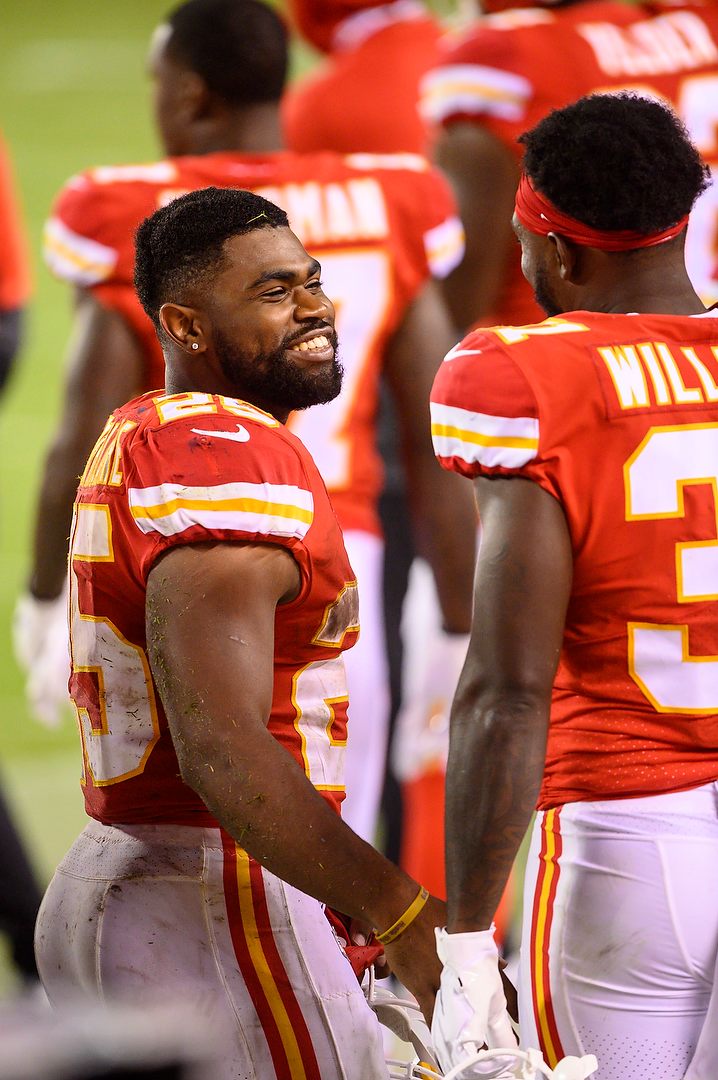
If a rookie running back gains over 100 yards and a touchdown in his first game, you better have photos. Even better was finding Chiefs running back Clyde Edwards-Helaire with well-earned a big smile on his face near the end of the game. Nikon D780, ISO 2000, 1/1000 at f/4, Nikkor 500mm f/4 lens.
The biggest challenge was moving around. Next game I’ll carry the 70-200mm as my second lens, since it will be lighter and smaller, making it easier to get past other photographers. And I’ll try to switch end zones a bit more, especially if there’s a TV timeout. But shooting the game is only part of the job.
Anyone covering pro sports has to send pictures as well as shoot them. In the old days, that meant at halftime and after the game. Now it means almost constantly. While many cameras offer ways to send photos without using a laptop, that only works for photographers who have editors helping them, who can then crop, caption and edit the photos. Everyone else still needs to download to a laptop. In the past, we had a work room about fifty yards off the field where we could use our laptops. No longer, because that would mean walking through an area the team also uses.
Now, our work room is in the top of the stadium, at the back of the press box. We’re well spaced out, with tables and power, but now to get to and from it, we need to use elevators. And not surprisingly, with other people in the stadium needing those same elevators, and social distancing inside them, it can take a LONG time to get an elevator. Since my photos were less deadline dependent and I only had to transmit before (after warm-ups) and after the game, the elevator problem had less impact on me. For the other photographers, though, it was a serious bottleneck.
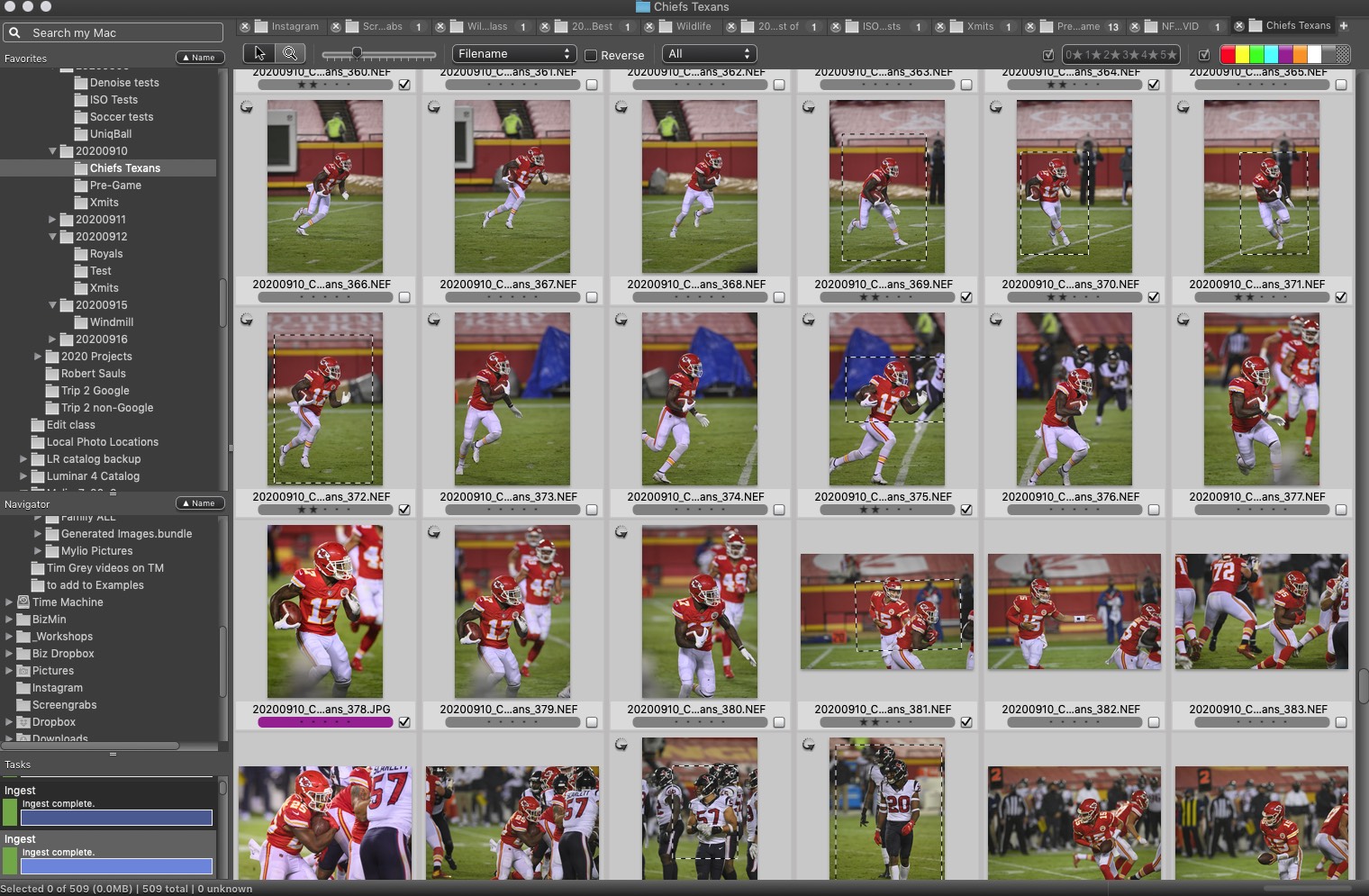
Photo Mechanic, by Camerabits, is and always has been the center of my digital workflow. I’ve never found another program to be faster for downloading, sorting, adding metadata and transmitting my pictures.
While most photographers are shooting JPEG because of tight deadlines or having to transmit from the camera, I could shoot RAW. That gave me a leg up on quality, as I had more latitude in adjusting the images afterwards. It’s also a requirement for the shoot, since corporate clients may want a RAW original, for the same reason. Plus, my workflow, incorporating Photo Mechanic and Camera Raw (part of Photoshop), lets me work just as fast as if I were shooting JPEGs. And workflow is a critical part of an assignment like this. Here’s what’s involved in that:
1 – Download the images from the card to the computer. Having fast cards and readers is a must.
2 – Quickly browse the images, selecting those that need to be sent and doing a simple crop and edit of them in Adobe Camera Raw, then save as JPEG to a separate folder. Getting the white balance and exposure right in-camera is critical for doing this quickly.
3 – Make sure all the IPTC (metadata) is correct for the client. For the AP, there are sixteen separate fields that must be filled in. Having software like Photo Mechanic automate much of that saves a great deal of time.
4 – All players and coaches in each photo need to be identified in two separate places in those sixteen fields. Again, using a tool like Code Replacement that can convert \k15\ into “Kansas City Chiefs quarterback Patrick Mahomes (15),” saves a huge amount of time.
5 – FTP the images into AP’s server in New York. Pray you’ve got a good WiFi network (we did at least in the press box).
6 – Stay in touch with the editor to make sure they’re getting what they need.
As I said, I shot the pre-game, then transmitted 13 images. Returned to the field for the game itself, then transmitted again after the game, 14 more. And finally, the next morning, going through my entire take and sending an additional 270 photos. For that final batch I selected the photos and added metadata in Photo Mechanic first, then imported into Lightroom for the edits before saving as JPEGs and transmitting.

After selecting and captioning the photos I’m going to send the following day in Photo Mechanic, I import them into Lightroom for cropping and tonal/color adjustments before exporting as JPEGs and transmitting.
So now the uncertainty is over. I know where I’ll be shooting from for the rest of the season, how to get around the stadium, and most importantly, what gear will work best. Sure, there will be changes going forward. With any luck, I won’t need my rain gear for future games. When they play in the daytime, I expect to have enough lgiht to use my 1.4X teleconverter to make that 500mm a 700mm. But the big questions have been answered, meaning I can sleep soundly again. Or at least as soundly as I ever sleep.
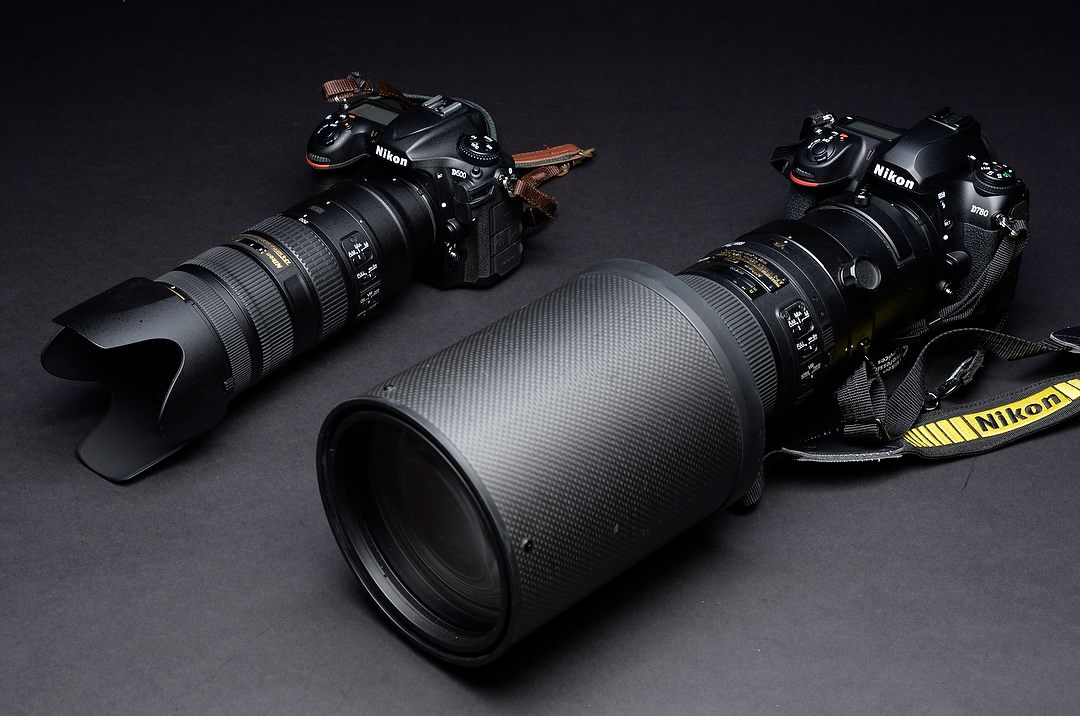
For the rest of the season my primary kit for the games will be the Nikon D780 and Nikkor 500mm f/4 lens, along with my crop-sensor (APS-C) D500 and Nikkor 70-200mm f/2.8 lens.
— If you’d like to see all the photos I sent to AP, as well as the Royals/Pirates game I shot for them last Saturday (also with the D780 and 500mm lens), you can find them here. —
(If you like this story, please share it with your friends and let them know about the links on photography that I post on my business Facebook page. I’m also on Instagram and Twitter, @reedhoffmann. And if you’re curious about the workshops I teach, you can find them here. And, you can subscribe to this blog on my home page.)

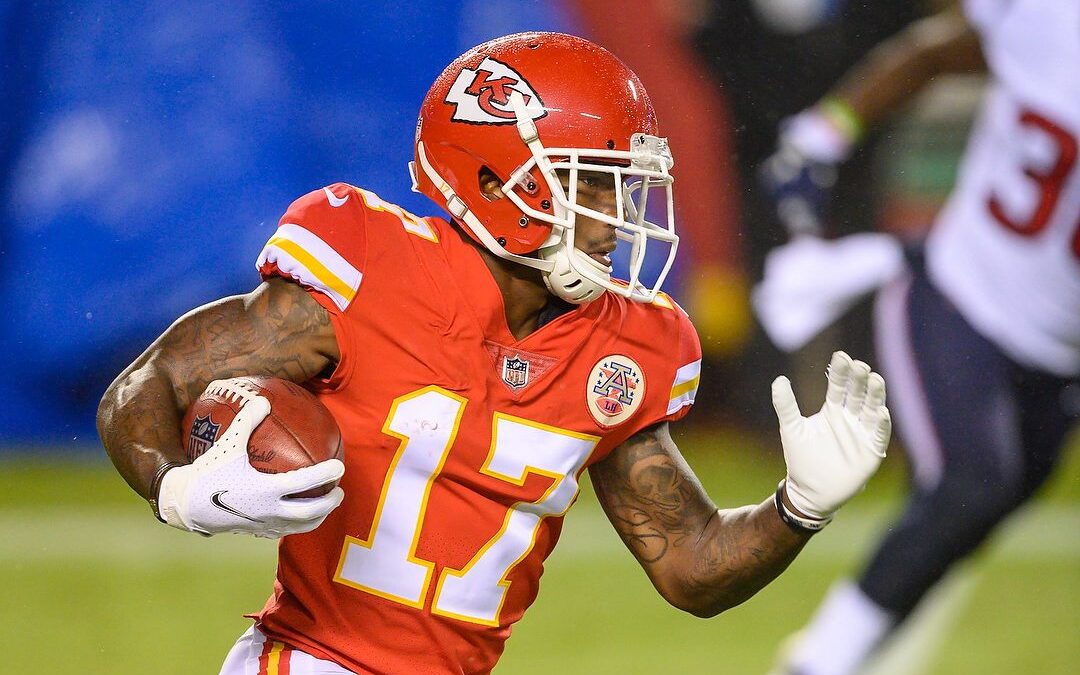
Hi Reed, thank you for the great write up. I’m a bird photographer and I currently shoot with the D750 with the Nikkor 500mm f5.6 pf lens.
I’m trying to decide between the D780 and D850. Sounds like the D780 has really good high ISO capabilities as you are happy with the image quality at ISO 8000. Wondering how high on ISO you would go with the D850? I’m also curious about the auto focus of the D780 as I always hear that the D500 or D850 has the best auto focus with bird photography. Thank you for your valuable opinion!
Hi Rick. Yes, you’re right, I’m extremely impressed with the D780’s high ISO capability. With fewer, larger pixels, it outperforms the D850 there. I had a D850 for two years, and tried to stay at 2000 ISO or under. Occasionally I’d go as high as 4000, but preferred not to. So it was my “good light” camera, the D780 for other times. As for AF performance, I just finished shooting the Chiefs 8-game regular season at home, and used the D780 as my primary camera on those games with my 500mm f/4. It was fast to grab focus and did an excellent job of follow focus, even with a running back or receiver coming right at me, tight, waist up to top of helmet. So while I don’t know any tests or numbers that compare AF performance with the D850 (which as you know is excellent with the same system as the D500 and D5), I certainly haven’t seen anything that makes me feel it’s slower.
Great read!
Thanks for sharing your thought process on gear.
Thanks for sharing your concerns.
And thanks for sharing your insights on covering the NFL and experiences at the first game of the season.
Reed, outstanding story! I really appreciate your being so detailed with the problems (photographic and logistical) that you solved.
Thanks, Reed, and I will pass it on to another Bills fan who is a very good amateur, and will enjoy your tips and info. Hope to be on a trip next year with you in the world out there!
I really enjoyed my time covering the Bills, despite all the Super Bowl losses. And yes, fingers crossed for next year!
Thanks Reed. Great story & images!